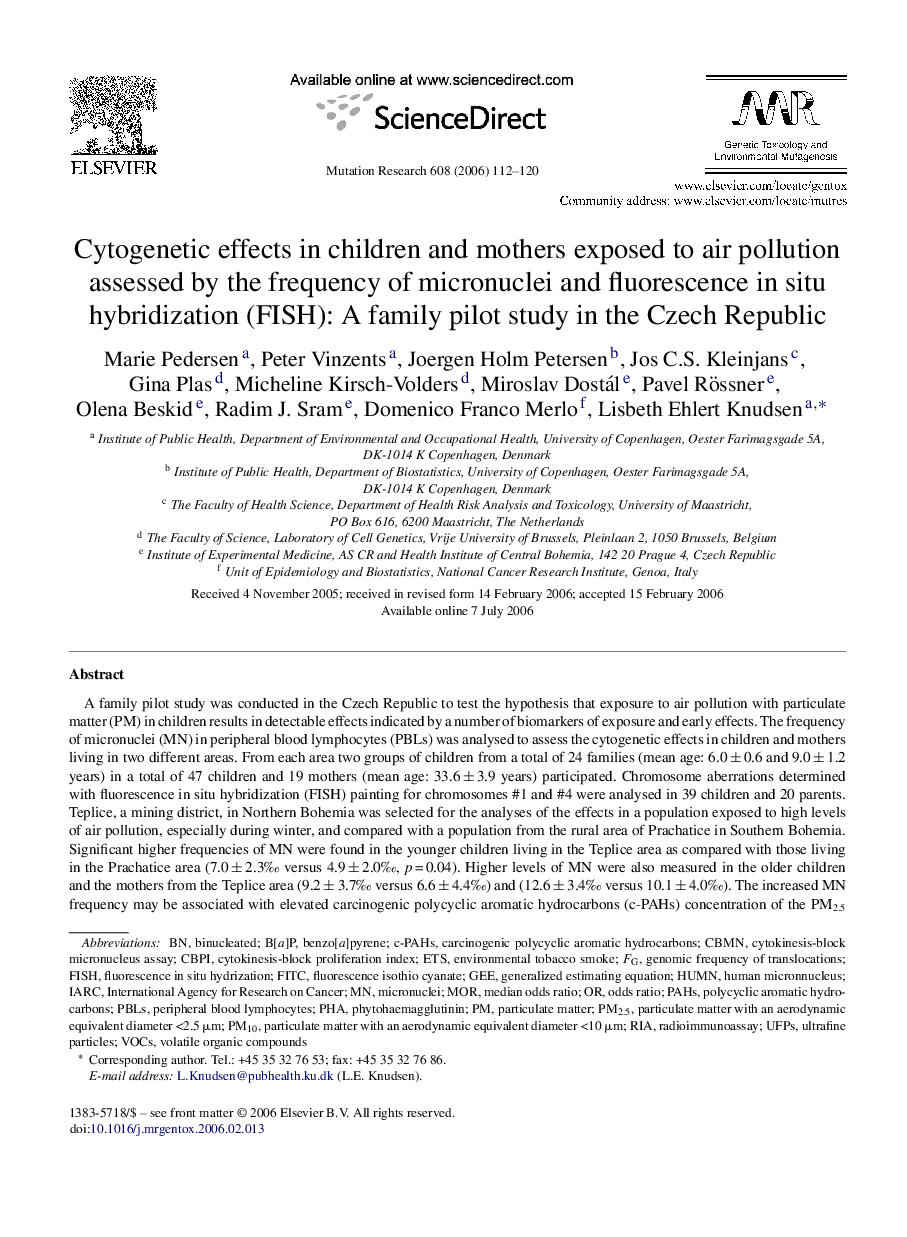| Article ID | Journal | Published Year | Pages | File Type |
|---|---|---|---|---|
| 2149450 | Mutation Research/Genetic Toxicology and Environmental Mutagenesis | 2006 | 9 Pages |
A family pilot study was conducted in the Czech Republic to test the hypothesis that exposure to air pollution with particulate matter (PM) in children results in detectable effects indicated by a number of biomarkers of exposure and early effects. The frequency of micronuclei (MN) in peripheral blood lymphocytes (PBLs) was analysed to assess the cytogenetic effects in children and mothers living in two different areas. From each area two groups of children from a total of 24 families (mean age: 6.0 ± 0.6 and 9.0 ± 1.2 years) in a total of 47 children and 19 mothers (mean age: 33.6 ± 3.9 years) participated. Chromosome aberrations determined with fluorescence in situ hybridization (FISH) painting for chromosomes #1 and #4 were analysed in 39 children and 20 parents. Teplice, a mining district, in Northern Bohemia was selected for the analyses of the effects in a population exposed to high levels of air pollution, especially during winter, and compared with a population from the rural area of Prachatice in Southern Bohemia. Significant higher frequencies of MN were found in the younger children living in the Teplice area as compared with those living in the Prachatice area (7.0 ± 2.3‰ versus 4.9 ± 2.0‰, p = 0.04). Higher levels of MN were also measured in the older children and the mothers from the Teplice area (9.2 ± 3.7‰ versus 6.6 ± 4.4‰) and (12.6 ± 3.4‰ versus 10.1 ± 4.0‰). The increased MN frequency may be associated with elevated carcinogenic polycyclic aromatic hydrocarbons (c-PAHs) concentration of the PM2.5 measured in the ambient Teplice air, but other factors like genotoxic compounds from the diet or protective effect of micronutrients, which was not addressed in this pilot study, may also differ between the two areas. MN frequencies were found to increase with age in children. Lower MN frequency was found in boys as compared to girls. The result of the FISH analyses showed a low number of individuals with detectable levels of aberrations and no significant increases in genomic frequency of stable chromosome exchanges (FG/100) were found in children or parents from the Teplice area in comparison with those from the Prachatice area. The family pilot study indicates that MN is a valuable and sensitive biomarker for early biological effect in children and adults living in two different areas characterised with significant exposure differences in c-PAHs concentrations during winter.
